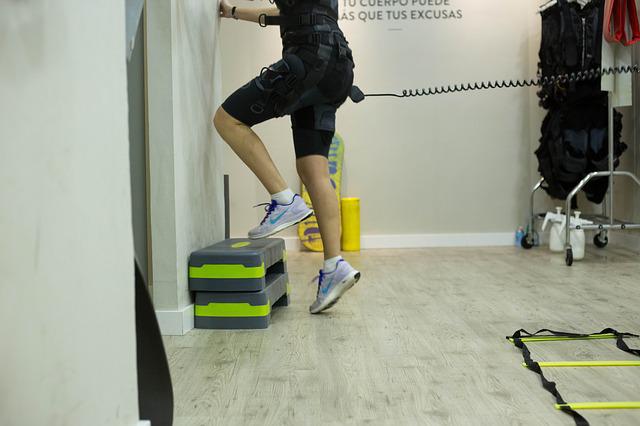Introduction
Are you considering enrolling in a 200 hour yoga teacher training courses in india? This comprehensive guide provides an overview of the training, prerequisites, planning tips and strategies for success. A 200-hour certification is the foundation for teaching yoga professionally with knowledge and skill. It requires dedication to learning a variety of topics including anatomy, sequencing classes, adjusting postures and providing hands-on assists. The benefits include gaining confidence as a teacher and deepening your own personal practice. With commitment and hard work, it can be an incredibly rewarding experience that will open up new doors both personally and professionally!
Prerequisites for the Training
Before you enroll in a 200 Hr Yoga TTC in India program, it’s important to understand the standards for completion and identify qualified trainers. The certification is regulated by the Yoga Alliance and requires a minimum of 200 hours of teaching practice. In order to complete this training, attendees must have at least six months of regular yoga practice prior to attending the course. Most trainings will also require students to attend all class sessions as well as any other recommended workshops or activities offered throughout the duration of the training.
In addition, it’s essential that you research potential teachers before enrolling in their program. Look into their background and experience as both practitioners and educators, read reviews from former students, inquire about curriculum content covered in past classes they have taught, and ask questions about their approach to teaching if possible. It may be beneficial to sit in on one or two classes with them prior to committing so that you can get a feel for what they are like in front of an audience. Knowing who your teacher is beforehand helps ensure that your training will be conducted safely and according to industry standards while meeting your individual learning objectives!
Planning for the Training
Once you have identified the ideal teacher and program for your 200-Hour Yoga Teacher Training, it’s time to start planning. Creating a schedule that fits with your existing commitments is key in order to ensure success during the training. Consider balancing evening classes with weekend sessions, or if available, look into taking intensive courses that cover more content over shorter periods of time. When selecting a location for the training, make sure you are comfortable with both the accommodation and transportation options from where you will be staying during this period of study.
You may also want to consider setting aside additional funds for unexpected expenses such as additional textbooks or other materials required by your teacher. Having an idea of what these costs may be ahead of time can help you budget more effectively and prepare yourself financially so that nothing gets in the way of completing this important certification process!
Finally, don’t forget to factor in self-care throughout the duration of your 200-Hour Yoga Teacher Training program! Make sure to leave some space in between each class session so that you have enough rest days built into your schedule. Taking breaks is essential for maintaining focus and energy levels while allowing plenty of opportunity for reflection on what has been learned so far – not just about yoga but also about yourself as well!
Yoga Styles Covered in 200-Hour Yoga Teacher Training
The 200 Hour Yoga Teacher Training in Rishikesh provides students with a comprehensive introduction to the various styles of yoga. Hatha is a traditional practice that emphasizes alignment and breath control, while Vinyasa focuses on linking movement with the breath in order to create flow. Ashtanga is an energetic style that follows a set sequence of postures, and Kundalini utilizes mantra and meditation for physical, emotional and spiritual healing.
Each style has its own unique benefits as well as potential challenges for both teachers and practitioners alike. By learning these different practices during your training, you will develop an understanding of how each can be used effectively in teaching classes or even within your own personal practice. In addition, having exposure to multiple styles allows you to better understand the technical aspects such as proper alignment cues, sequencing options and modifications that can be made when necessary.
It’s also important to note that many modern styles have been heavily influenced by traditional teachings from India so it’s beneficial to gain at least some level of cultural context before beginning your training if possible. This knowledge provides insight into how each tradition evolved over time which helps deepen one’s appreciation for their lineage – something that all yogis should strive towards!
Teaching Strategies for 200-Hour Yoga Teacher Training
Sequencing is an important part of any successful 200-Hour Yoga Teacher Training program. It involves creating a logical and balanced flow for the class that incorporates appropriate postures, breath work and relaxation techniques. A well-crafted sequence helps to provide a safe environment as students move through their practice while also allowing teachers to create unique classes with different goals in mind. When designing sequences, consider factors such as your own experience level, the type of class you are teaching (such as beginner or advanced), energy levels desired for each pose and transitions between them. Additionally, it’s important to remember that some postures should never be performed together so pay close attention to contraindications when sequencing!
Adjustments and assists are essential elements of hands-on instruction which help guide students into deeper poses safely and effectively. During your training, you will learn how to make adjustments with awareness using proper body mechanics – something that takes time and patience to master! You will also gain insight into providing verbal cues during class so that everyone can find their most comfortable position without being overwhelmed by too much physical contact from the teacher. Assists are often used in more advanced classes but they can still be beneficial in basic classes if done correctly; learning this skill requires sensitivity towards both the student’s needs as well as your own limitations!
Language plays an integral role in effective communication during yoga classes since instructors must use words which describe alignment principles clearly yet concisely enough for all participants to understand what is expected from them physically. This includes being able teach individuals on specific postures while managing larger groups at the same time – something we call “multi-tasking”! Working on developing these skills during your training will help ensure smooth transitions throughout each class session while building trust between yourself and other practitioners who are attending your sessions down the line.
The final component of teaching strategies focuses on working with individuals vs larger groups within a 200-Hour Yoga Teacher Training program . Teaching one on
Evaluation of 200-Hour Yoga Teacher Training
The evaluation process of a 200-Hour Yoga Teacher Training program should include both exams and tests that measure the student’s knowledge and understanding of key concepts. These assessments can range from short answer questions to multiple choice quizzes, depending on the complexity of the material being taught. Additionally, it is recommended that students take part in practical demonstrations such as posture or meditation practice in order to observe how they apply their learning in real life scenarios. The results from these evaluations will then be used by teachers when compiling final reviews for each student so they can assess progress over time and identify areas where further development may be needed.
Along with examinations, a comprehensive review system should also be put into place at the end of an intensive training program such as this one. This allows instructors to gain valuable feedback on topics covered during class sessions as well as any challenges faced when teaching individual students throughout the duration of the course. Having an objective assessment helps ensure that everyone involved is able to make improvements if necessary while providing support for those who have met their goals! Furthermore, it creates a positive atmosphere where constructive criticism is welcomed instead of feared – something which encourages open dialogue between all parties involved including students, teachers and administrators alike!
Post-Training Requirements
Once the 200-Hour Yoga Teacher Training program has been completed, there are a few additional steps that need to be taken in order to maintain certification. The first is continuing education which involves attending workshops and courses on various topics related to yoga teaching such as anatomy, philosophy or even marketing strategies. This helps ensure that instructors stay up-to-date with current trends in the industry and allows them to expand their knowledge base so they can provide better classes for their students.
In addition, many programs also offer mentorship opportunities where experienced teachers guide new ones through both the practical and theoretical aspects of teaching yoga. These mentors provide guidance on class structure, sequencing techniques and other important elements required when leading a group session – something that can prove invaluable during a student’s initial years as an instructor! It’s worth noting however that some training centers may require these services before granting full certification; make sure you understand what is expected from you ahead of time so there are no surprises later down the line!
Conclusion
In conclusion, obtaining a 200-Hour Yoga Teacher Training certification is an invaluable step towards becoming a successful and knowledgeable yoga instructor. By learning different styles of practice, understanding sequencing strategies, developing effective communication skills and having exposure to both exams and mentorship opportunities during the program, instructors gain the knowledge necessary to provide safe and enjoyable classes for students of all levels. This certification also serves as proof that one has met the professional standards set forth by their training center which can be beneficial when applying for jobs or teaching at larger studios. With these tools in hand it’s up to each individual instructor to use them wisely in order to create meaningful experiences for those who come into contact with their teachings!







